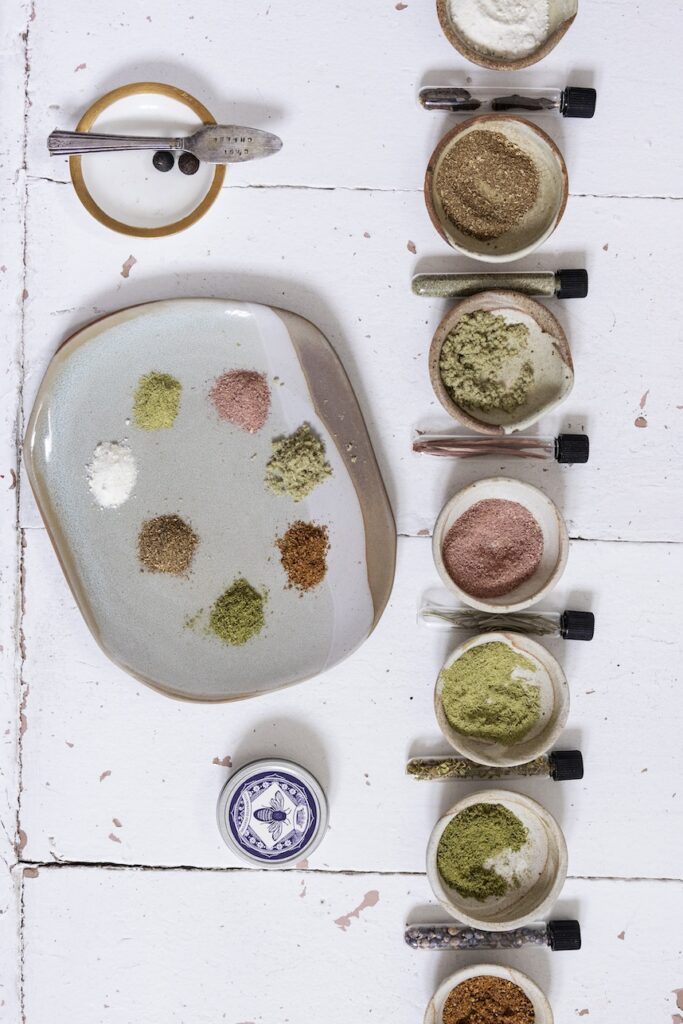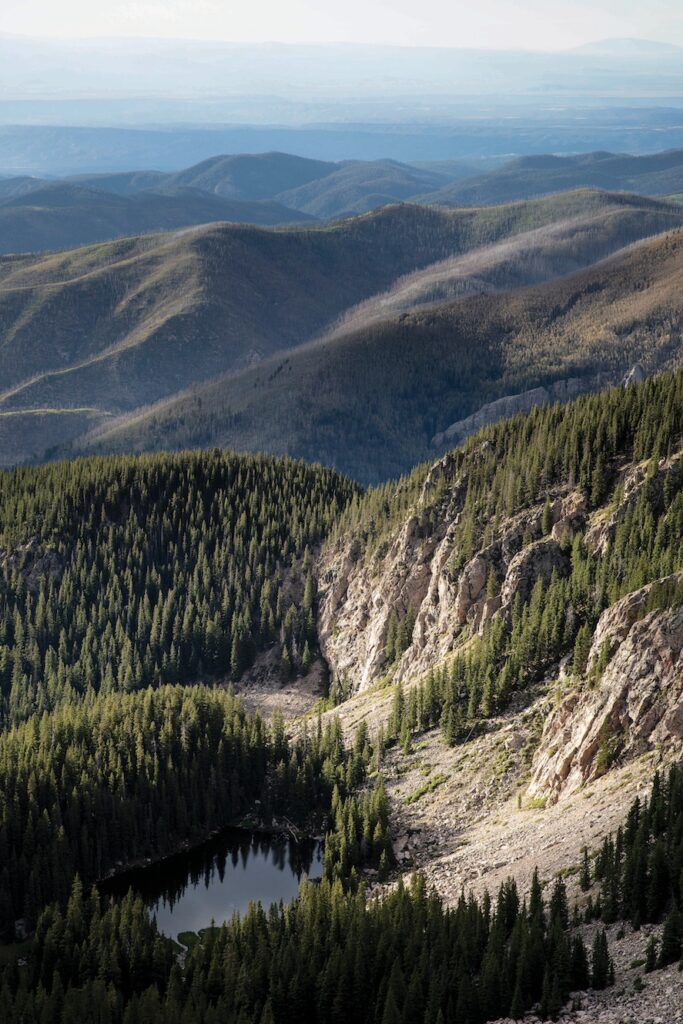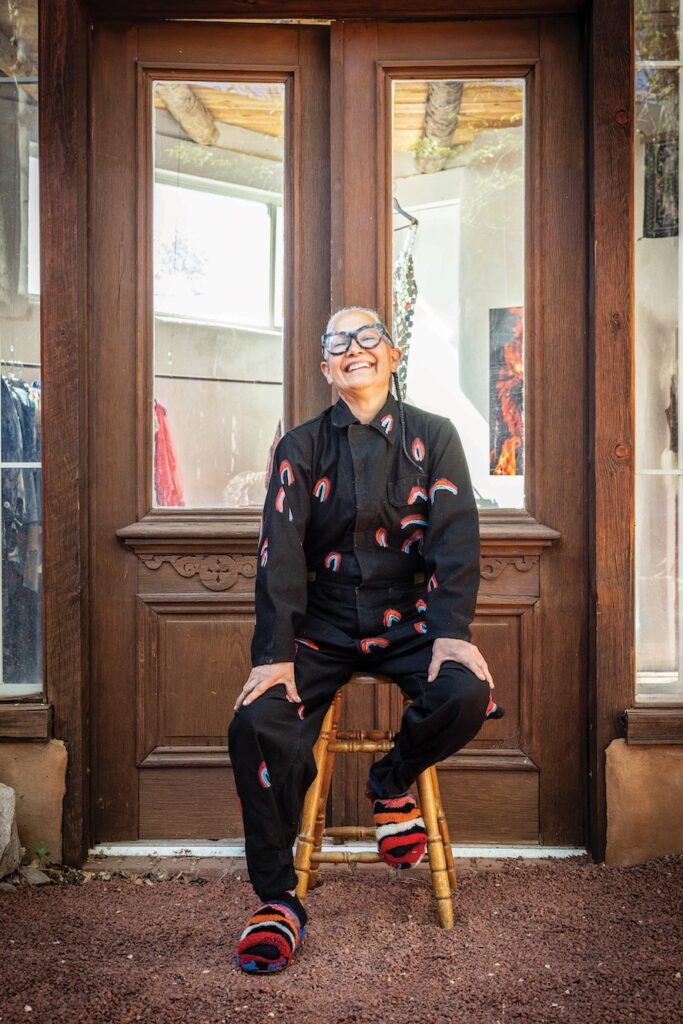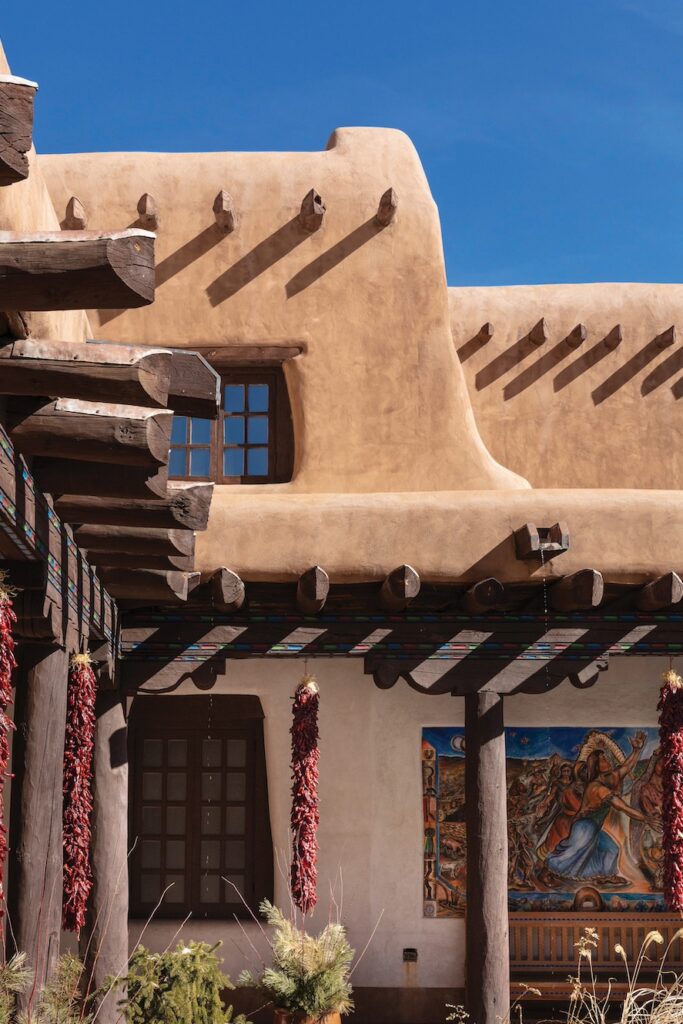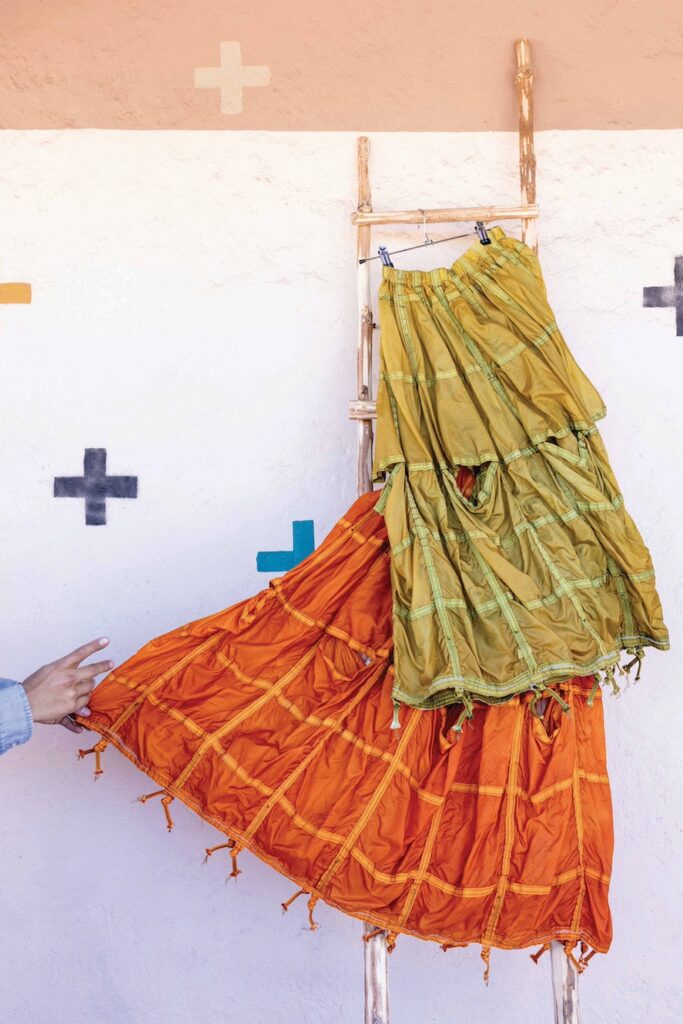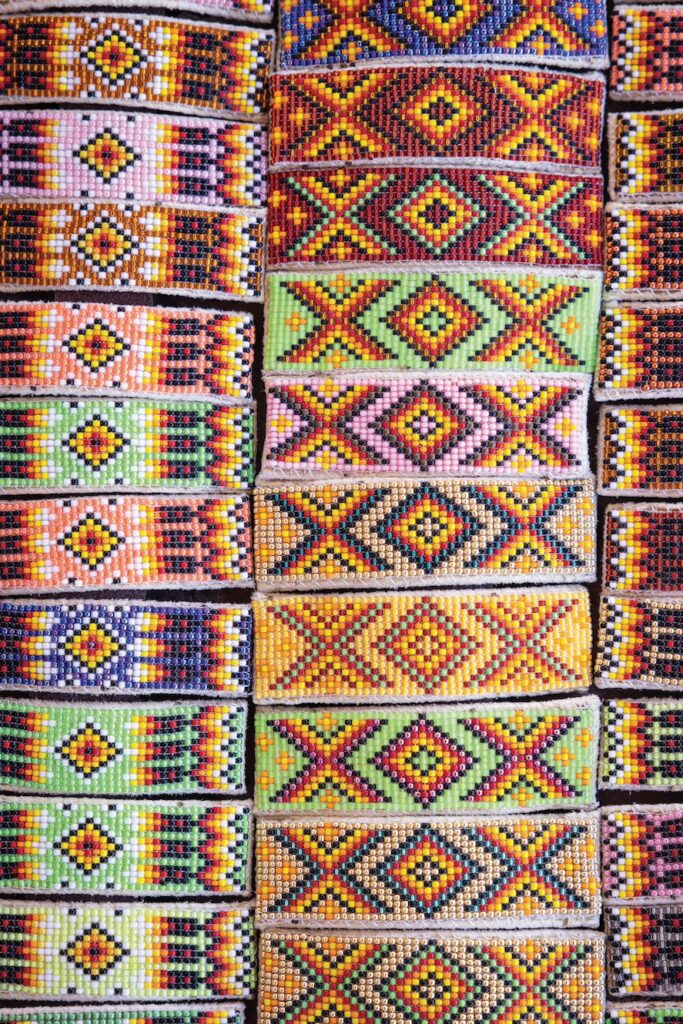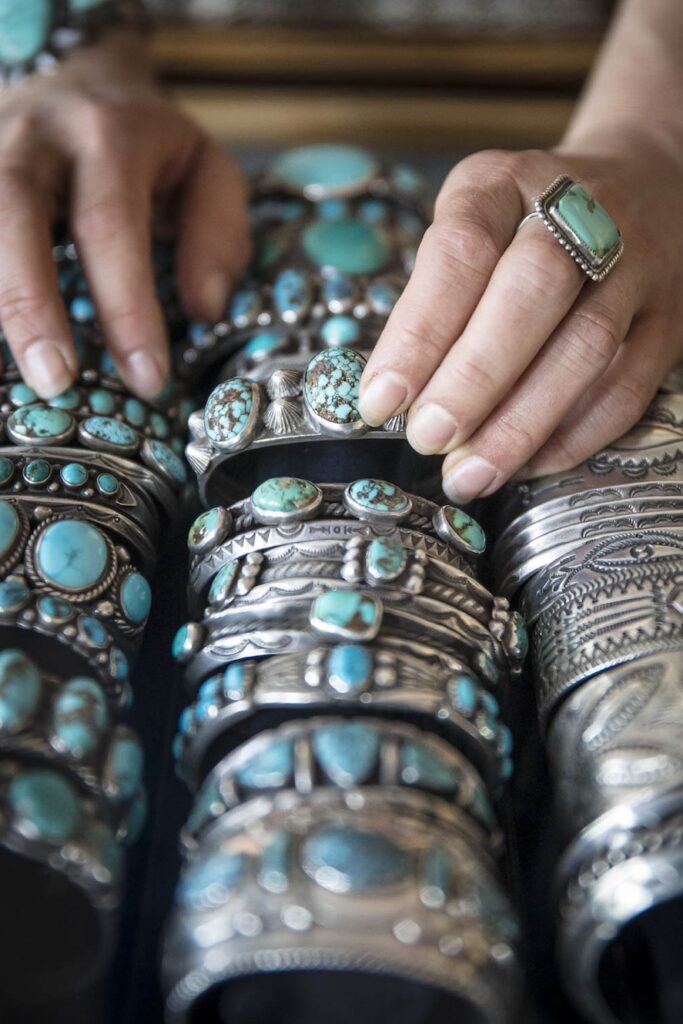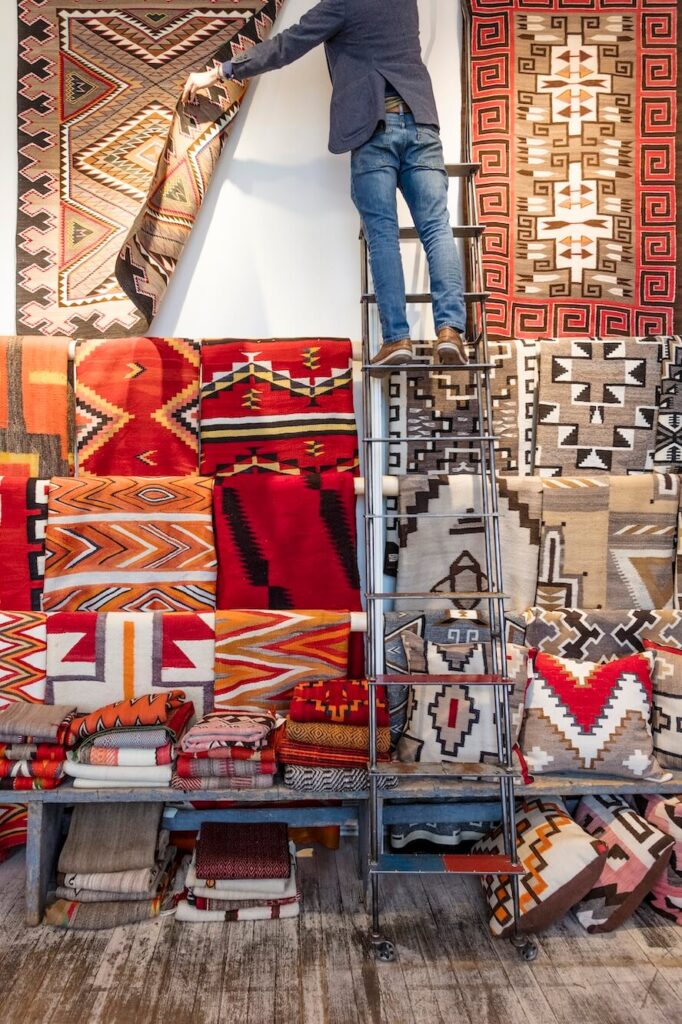On the whitewash Gothic altar of Bishop Lamy’s Chapel, in the foothills north of Santa Fe, Roxana Villa traces her bare fingers through mounds of ground juniper berries, piñon needles, cedarwood, osha root, creosote and sage.

An artist and aromatherapist who moved to New Mexico’s capital in 2017, Villa is crafting incense rooted in this land. After mixing the herbs—plus frankincense, an homage to the Egyptians who pioneered the art of perfumery—she binds it with a dab of local honey. Once the ball of herbs is lit, cords of sweet, earthy, olive smoke redolent of the surrounding Sangre de Cristo Mountains curl up to the chapel’s century-old vigas.

The incense-making class is one of a host of experiences offered by local haven Bishop’s Lodge, Auberge Resorts Collection, which invites guests to delve into the culture and history of Santa Fe, one of America’s oldest cities. The chapel, which was built to be a private retreat in 1874 by the first Roman Catholic archbishop of Santa Fe, Jean-Baptiste Lamy, and later became the centerpiece of the original 1918 Bishop’s Lodge, is an apt setting for visitors to get situated. Even as this place brims with history, it invites everyone who passes through to experience something fresh and urgent.

Santa Fe has long been a melting pot of ideas and aesthetics, beckoning for centuries to entrepreneurs, wayfarers, and free spirits. It first drew artists from the East Coast in the 1880s to document Native American culture, followed after the turn of the century by a second wave of photographers and painters—including Georgia O’Keeffe—who were drawn by the patchwork of cultural influences and the sage-fringed high desert space and light. The city is now host to some 250 dealers and galleries, making it the third-largest US art market after the much-larger New York and Los Angeles. And in the last several years, Santa Fe has continued to evolve and develop as a new generation of creatives and entrepreneurs find their way here.
Archbishop Lamy’s chapel at Bishop’s Lodge in 1942.

Case in point is the Santa Fe Plaza, the one-block square where New Mexico’s capital sprang up some 400 years ago.
From the center of the square, you can see the Santa Fe Indian Trading Company, Shiprock Gallery—one of the finest purveyors of Navajo jewelry and art in the city—and the New Mexico Museum of Art, which houses an extensive collection of works by the Los Cinco Pintores, five painters who helped establish Santa Fe as an art colony in the 1920s, as well as paintings by O’Keeffe, woodblock prints by Gustave Baumann and notable works of other pioneering artists of the American West.

But in a testament to the city’s relentless evolution, last fall, the museum opened Vladem Contemporary, a cantilevered concrete and steel offshoot in the nearby Railyard Arts District dedicated to abstract, conceptual, video, and interactive art of the state and southwest. “Shadow and Light,” the opening show in the $20.2 million museum, fills the entire 35,000-square-foot facility with works from the last 50 years by seminal New Mexico figures such as Larry Bell and Nancy Holt, as well as more contemporary artists such as Leo Villareal and Virgil Ortiz.
“The goal is to showcase the modern work of this region, which is every bit as vibrant and important as the historical works downtown,” a docent explains during a recent visit.

Such juxtapositions can be found all over town. Beneath the timbered arcades of The Plaza’s long, low cinnamon-colored buildings, Native American traders huddle on brightly patterned blankets and peddle silver and turquoise jewelry, like a century-old scene out of rural Mexico. A block away, 34-year-old George Alexander Ofuskie, an up-and-coming Muscogee Creek artist, paints in his convival working studio that’s open to the public. Ofuskie’s astronaut series, which explores perspectives on culture, borders, race and politics through a tableau of space-helmet clad figures in western and urban landscapes, landed him spots in the National Gallery and on the cover of the prestigious 2023 SWAIA Santa Fe Indian Market.

During an afternoon visit to his studio, Ofuskie scrolls through the 1930s murals of Oscar Howe and Flatstyle paintings by Fred Beaver, a modernist approach rooted in Plains hide painting that are currently inspiring his work. He stresses tradition and culture, but also emphasizes the importance of questioning beliefs, expanding his vision, and making things that are accessible. He says he’s just as excited about the collection of Flatstyle stickers he’s working on as the wall-size paintings on his easel and stacked against the walls.

That sense of expansiveness pervades the Santa Fe scene. The Santa Fe Opera is every bit as iconic as those in Sydney or Vienna, but here it’s open-air, with views of the Jemez Mountains and always preceded by dress-up opera house parking lot tailgate parties. And even places with no immediate connection to the arts are inspired by the town’s creative and cultural bent, such as the historic Mesoamerican drinking elixirs and exquisitely decorated chocolates at Kakawa and the Japanese garden-inspired soaking tubs at Ten Thousand Waves Spa, which also recently underwent a major renovation.
But if any one place typifies the fresh creative and collaborative energy in town, it’s 4KINSHIP, the first and only indigenous-owned business on Santa Fe’s gallery-packed Canyon Road.

Opened in summer 2022 by the Diné artist and fashion designer Amy Denet Deal, the store sells a vibrant assortment of Deal’s handmade and upcycled clothing and designs, while simultaneously serving as an incubator and showcase for young indigenous artists. Where most galleries take a 50 percent commission, Deal gives guest artists in her space 100 percent of proceeds, describing it as her duty to help foster native art. She also uses the revenue from her own work to fund development projects on the Navajo Nation, including a youth skate park. “Coming to Santa Fe was one of the best things I ever did,” she says. “It’s such a vital and creative community.”

Bishop’s Lodge, Auberge Resorts Collection, has taken new inspiration from these vibrant surroundings. The 100 rooms have been fully renovated with native fabrics, local textiles and artifacts, and accents of aspen and other indigenous woods. And the new restaurant, Skyfire, serves an eclectic menu that blends local flavors with reimagined traditions from lesser-known parts of Mexico and Central America. Tostadas are festooned with yellowtail, pumpkin seeds, and guacamole; New Mexican lamb is braised with local wild mushrooms and served over grits; delicious margaritas are spiced up with apricots and Hatch chile; and hot chocolate is a dark, sumptuous, cinnamony blend passed down from one of the pastry chef’s Diné grandmothers. The bold flavors at the restaurant are as rich, refined and colorful, as Santa Fe’s broad, historic art palette, and should not be missed.


Bishop’s Lodge’s resident trail system is also a microcosm and gateway to the vast lattice of hiking and biking tracks across Santa Fe’s foothills and mountains. The resort has revamped and expanded the singletrack on its property, which wends across piñon– and juniper-stippled foothills. It’s a great little system for strolling, but the real prize is access to some 800 miles of trail. And there’s something here for everyone, including fast, flat gravel riding on the Caja in winter and fall, rollercoaster desert singletrack at La Tierra and Dale Ball, bikepark-style flows trails at Glorieta, and cool, shady, high-alpine singletrack where you can escape the heat of summer. There’s even rideable trail to the 12,409-foot Lake Peak, which grants access to a 12-mile ride downhill all the way back to Bishop’s Lodge. Based on the volume and variety of its trails, Santa Fe offers as much of an outdoor playground as it does art.

About that: on opening, the team at Bishop’s Lodge restored four wall-size paintings that had been tucked away for decades and nearly forgotten. The series, striking portraits of Native American characters in stylized environments, was painted by Warren Rollins, an early 20th-century artist whose work also hangs in the New Mexico Museum of Art. The story goes, before he gained notoriety, Rollins racked up a hotel bill at the Bishop’s Lodge that he couldn’t afford and paid the tab with these paintings. Rollins would eventually go on to become the first president of the Santa Fe Art Club and have an outsize influence on Western art.
But the tale’s power is in its simple truth: Santa Fe has been attracting creatives for over a century—and art and its sense of free spirit has long been the town’s currency.

